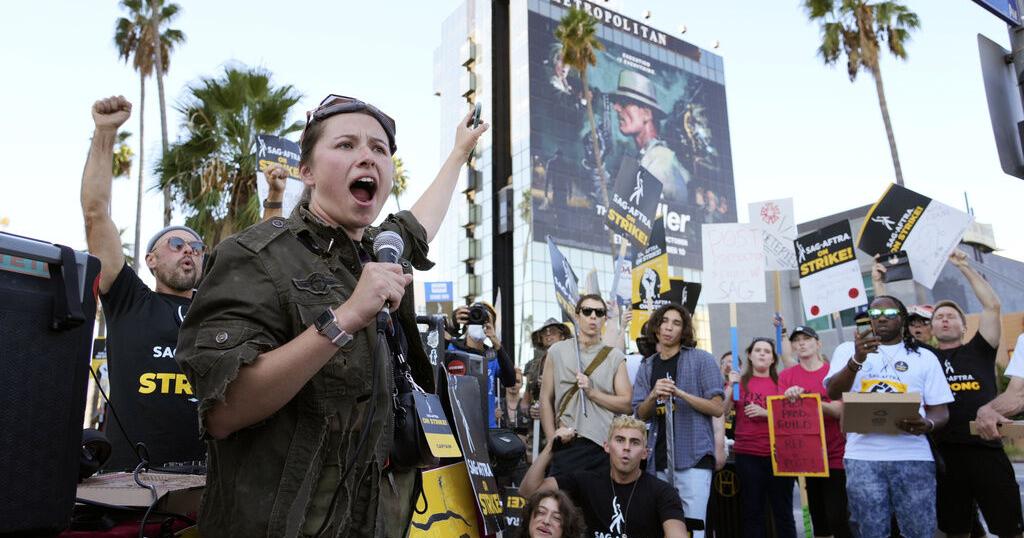LOS ANGELES — Hollywood’s actors union reached a tentative deal with studios Wednesday to end its strike, bringing an end to months of labor strife that ground the entertainment industry to a historic halt.
The three-year contract agreement must be approved by votes from the union’s board and its members in the coming days, but the leadership declared the strike will end at 12:01 a.m. on Thursday.
More than 60,000 members of the Screen Actors Guild-American Federation of Television and Radio Performers went on strike July 14, joining screenwriters who had walked off the job more than two months earlier. It was the first time the two unions had been on strike together since 1960. Studios chose to negotiate with the writers first, striking a deal that their leadership marked as a major win and bringing their strike to an end on Sept. 26.
The details of the agreement were not immediately released, but are likely to be shared with the actors and the public in the coming days. Issues on the table included both short-term compensation and future royalty payments for film and TV performances, along with control over actors’ images and likenesses regenerated with artificial intelligence.
Executives from top entertainment companies including Disney, Netflix, Warner Bros. Discovery and Universal had a direct hand in negotiations, which like all Hollywood union talks were led by the Alliance of Motion Picture and Television Producers.
Although the writers strike had immediate, visible effects for viewers, including the monthslongsuspension of late-night talk shows and “ Saturday Night Live,” the impact of the actors’ absence was not as immediately apparent. But its ripple effects — delayed release dates and waits for new show seasons — could be felt for months or even years.
Actors could quickly return to movie sets where productions were paused, including “Deadpool 3,” “Gladiator 2” and “Wicked.” Other movies and shows will restart shooting once returning writers finish scripts.
And beyond scripted productions, the end of the strike would fully free actors to return to red carpets, talk shows and podcasts, as Hollywood’s awards season approaches.
The only major awards show directly effected by the strike was the Emmys, which was moved from September to January. Now, the usual fall Oscar campaigns are likely to mobilize.
But any feeling of industry normalcy could prove temporary. The circumstances that brought on the strikes — the shift from traditional theatrical and broadcast media to streaming, and emerging tech like AI — have not been slowed. And the gains made by the strikes may embolden other Hollywood unions, or these same guilds in negotiations that will come up again in just a few years.
Union leaders treated the strike like a watershed moment from the start, coming as it did amid wider labor fights in other industries.
“I think it’s a conversation now about the culture of big business, and how it treats everybody up and down the ladder in the name of profit,” SAG-AFTRA President and “The Nanny” star Fran Drescher told The Associated Press in an August interview.
Duncan Crabtree-Ireland, the executive director and chief negotiator who led the team that struck the deal for the guild, told the AP in August that he was “honored to be part of making sure that our members get a fair contract that’s going to protect them going into the future and make sure that the 14-year-olds I talked to on the Disney picket line still have the ability to be an actor when they turn 18.”
The agreement, if approved, also means a return to sets for thousands of film crew members who have left with nothing to work on during the strikes. SAG-AFTRA sought to offset their hardship by allowing sometimes controversial interim agreements for some smaller productions to proceed, and by making their strike relief fund available to all workers in the industry.




